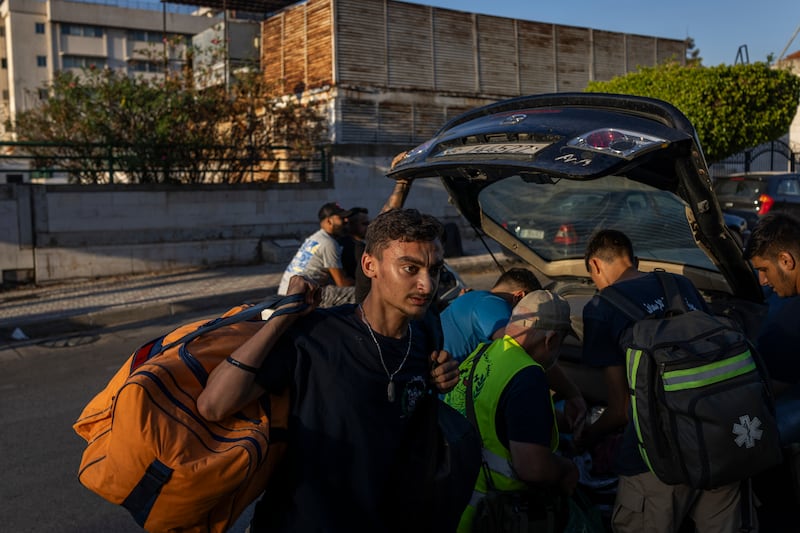Lebanon is reeling from the deadliest Israeli assault since the 2006 war, with an already traumatised nation braced for more attacks in the coming weeks. By Monday evening 492 people had been killed and 1,645 wounded, with at least 58 women and 35 children among the dead, Lebanon’s health ministry said in a statement.
While Israel said was conducting “extensive, precise strikes” hitting at least 1,300 targets, health minister Firas Al-Abyad said Monday’s strikes hit ambulances, fire trucks, medical centres and the cars of displaced people who were attempting to move to safer areas.
During a press conference in Beirut in the late afternoon Mr Al-Abyad said that within the space of a week the number of wounded people had reached about 5,000, nearly half of the total number wounded in the 34-day war between Israel and Hizbullah in 2006.
Videos on WhatsApp showed desolate scenes following air strikes on both rural and urban areas, with smoke rising over trees and debris blocking roads. Drones could be heard flying above Beirut on Monday evening.
READ MORE

The strikes took place mostly in south and east Lebanon, and came shortly after some Lebanese citizens began receiving recorded phone calls and text messages warning them to evacuate. According to Lebanese telecommunications company Ogero, more than 80,000 automated calls were made on Monday.
Lebanese information minister Ziad Makary told Reuters news agency that his office was among the places that received a call. He described it as part of “a psychological war”.
On Monday evening videos showed packed roads with barely moving traffic as thousands of people fled south Lebanon. Some families were stuck in vehicles for hours without water or other assistance.
On social media Lebanese people shared appeals for, or offers of, cheap or free accommodation, with online forms set up to connect people with those willing to host them. Others complained that some people were taking advantage of the crisis to drastically raise prices.
By early September more than 113,000 people had already been displaced from south Lebanon, according to figures shared by the UN Office for the Co-ordination of Humanitarian Affairs. By that time there had been 589 deaths recorded, including at least 137 civilian deaths.
Months of discussion around what many Lebanese people refer to as “the situation” has suddenly become much more frantic. Relatives and friends sent advice on WhatsApp about what to stockpile – rice, gas, wheat or water, for example – while neighbours had similar conversations in the streets. Petrol stations saw queues of cars, their drivers filling tanks with fuel in case it soon stops being available. Others worried that they did not have the capacity or financial wealth to adequately stockpile food and fuel.
Lebanon has suffered a crippling series of shocks, including a devastating economic crisis which began in 2019, and the Beirut port explosion in 2020. Many citizens have lost faith in the functioning of their government or any state institutions.
Among the population of about 5.2 million are an estimated 1.5 million Syrians who fled the war which began in the neighbouring state in 2011, and about 210,000 Palestinian refugees, who are mostly barred from obtaining citizenship.
The Lebanese Red Cross said that all of its emergency and rescue centres were responding to the casualties, with ambulances from Beirut and Mount Lebanon heading south even as displaced people fleeing the barrages came north.
Many “sisterly and friendly countries” have expressed willingness to support Lebanon at this time, health minister Mr Al-Abyad said.
- Sign up for push alerts and have the best news, analysis and comment delivered directly to your phone
- Join The Irish Times on WhatsApp and stay up to date
- Listen to our Inside Politics podcast for the best political chat and analysis















